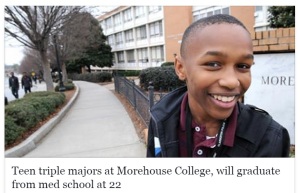I love to see when our educators have so much pride in their schools and their kids. And even better when people of importance take notice. Brian Suits, principal at Dalton Middle School completed an application for GA Principal of the year – and he won for 2015-2016. He applied because he wanted to promote the success his school has had such as improving tests scores and overcoming a bad economy that had put many of his students into poverty. When he won, he believed that he would be going to Washington DC, as each winner had in the years prior. This year, GA sent only one representative and it was the GA High School Principal of the Year.
Suits was upset because he had told he his students he was going to go to Washington DC. Instead of disappointing them, he wrote letters to express his thoughts – to Governor Deal, to the National Association of Secondary Principals, GA state superintendent and President Obama. He didn’t mail them at first, and as he edited them they became less about his opportunity to go to Washington and more about the successes his school had accomplished. Over the summer, he decided to mail the letters, after yet another school tragedy.
While the White House receives over 20,000 letters per day, Suits letter made it in the daily 10 letter pile to the President. And the President wrote back.
Suits letter mentioned just some of the things happening at his school:
He wrote about Luis Orozco, now a freshman at Dalton High, who picked up garbage after his wrestling match so the custodians wouldn’t have to stay late.
He wrote about a receptionist they tutored so she could get her U.S. citizenship.
He wrote about a student who asked if Suits could be “sort of be like his dad” since he was living with a single mother.
He wrote about climbing tests scores and becoming the first Literacy Collaborative middle school in the United States.
Suits also mentioned Dalton Middle School’s groundbreaking sensory room (there are only around 10-12 of these rooms in schools around the nation) — a room designed to calm and sooth autistic children when they have an outburst.
Suits talks about the response to the President’s letter:
On Sept. 11, Suits was going through his mail when he came to a large envelope from the White House. As Suits read the letter, he realized it wasn’t just a form letter. Obama himself had actually read his letter.
“He mentioned kids’ names and things I said in the letter,” Suits said. “I’m shocked he even read it.”
Suits told the teachers and students who had designed the sensory room that the president had mentioned their work in his letter. “They got very emotional. One teacher teared up,” said Suits.
Both Robertson and Ross said they called their parents to tell that their work had been mentioned by the president of the United States. “Out of millions of people, he knows us,” said Ross.
“It’s crazy because the president knows about me. He knows what I did at school and knows about my work,” Robertson said.
Suits also made a trip to Dalton High to show Orozco the letter.
“When I got to the part where his name is, his eyes teared up. He said, ‘He knows my name,’” said Suits.
An excellent quote from Suits letter applies to all schools: “Our kids are underestimated at every turn, but they have so, so much to teach us. We just need to value their voices, and listen.”














